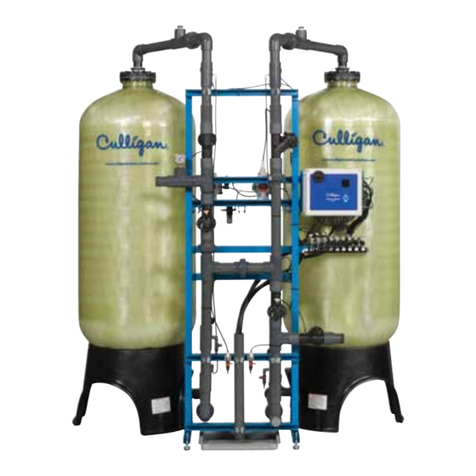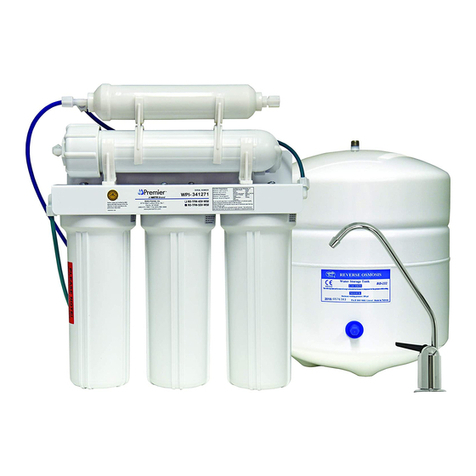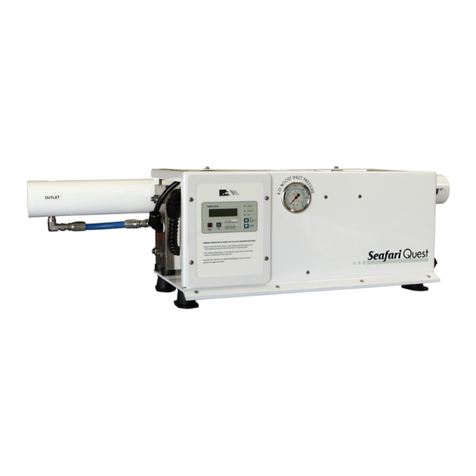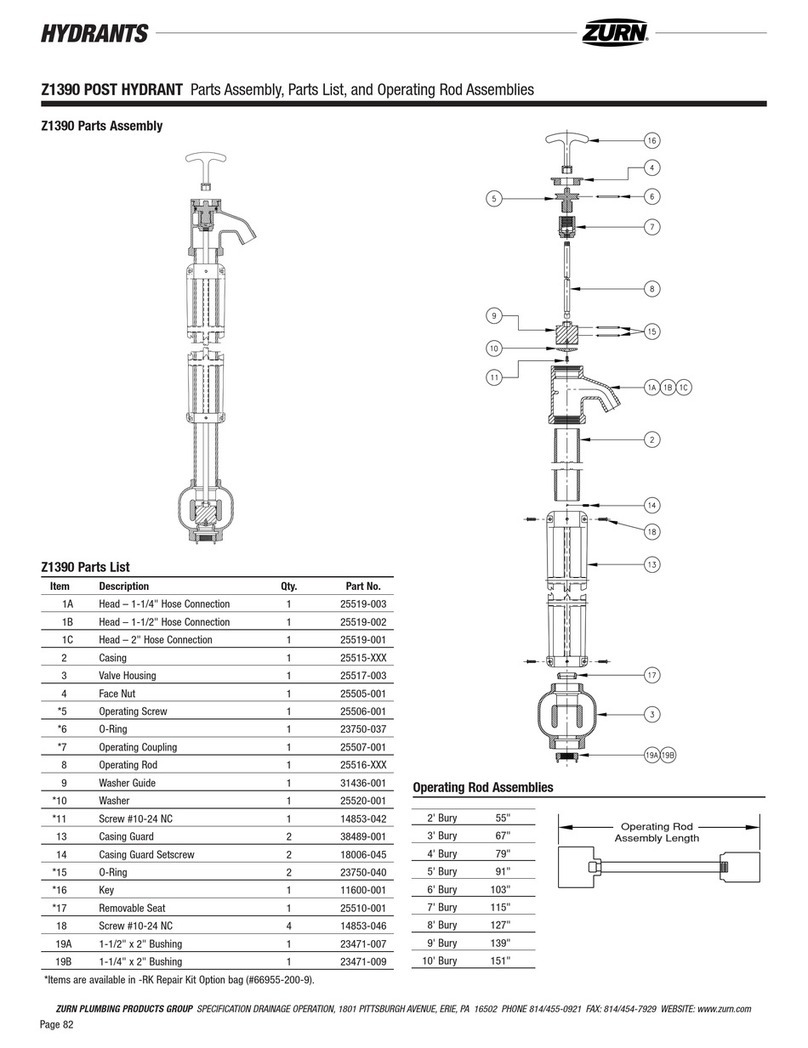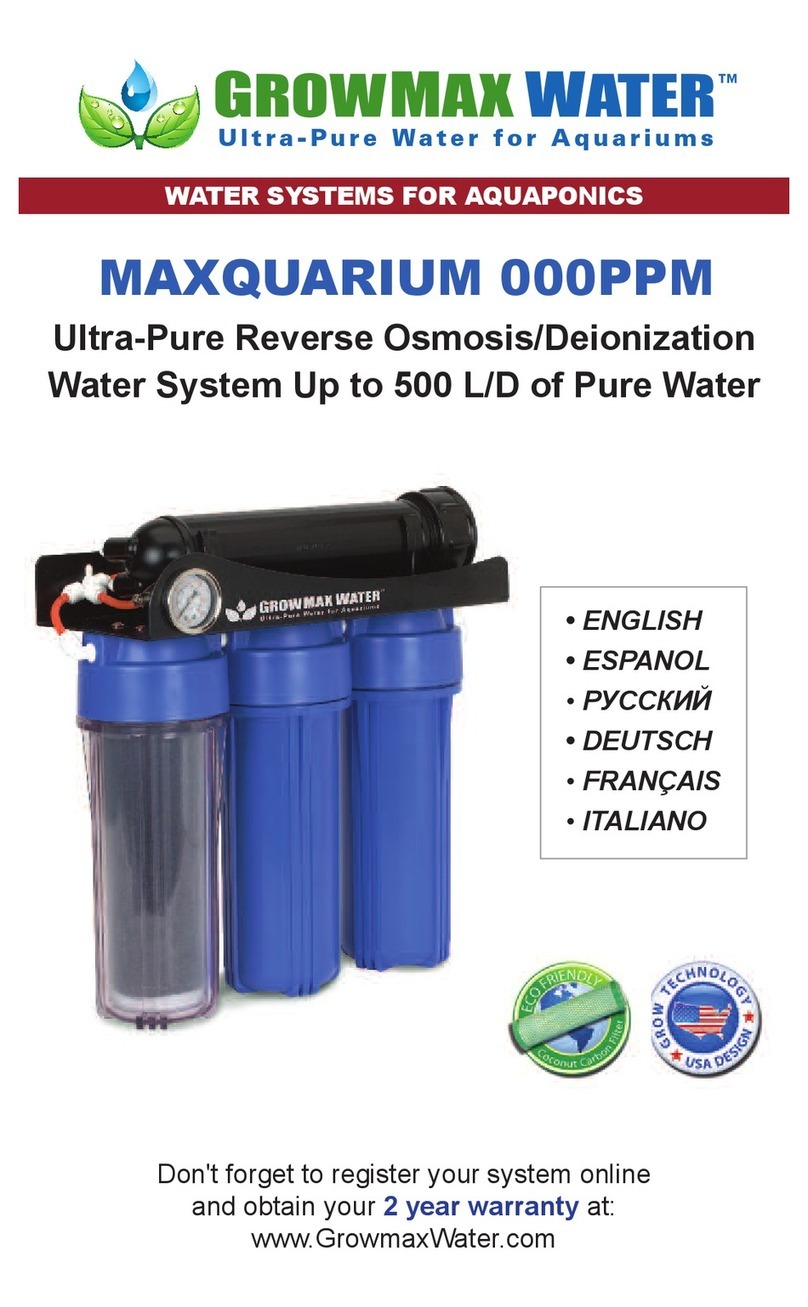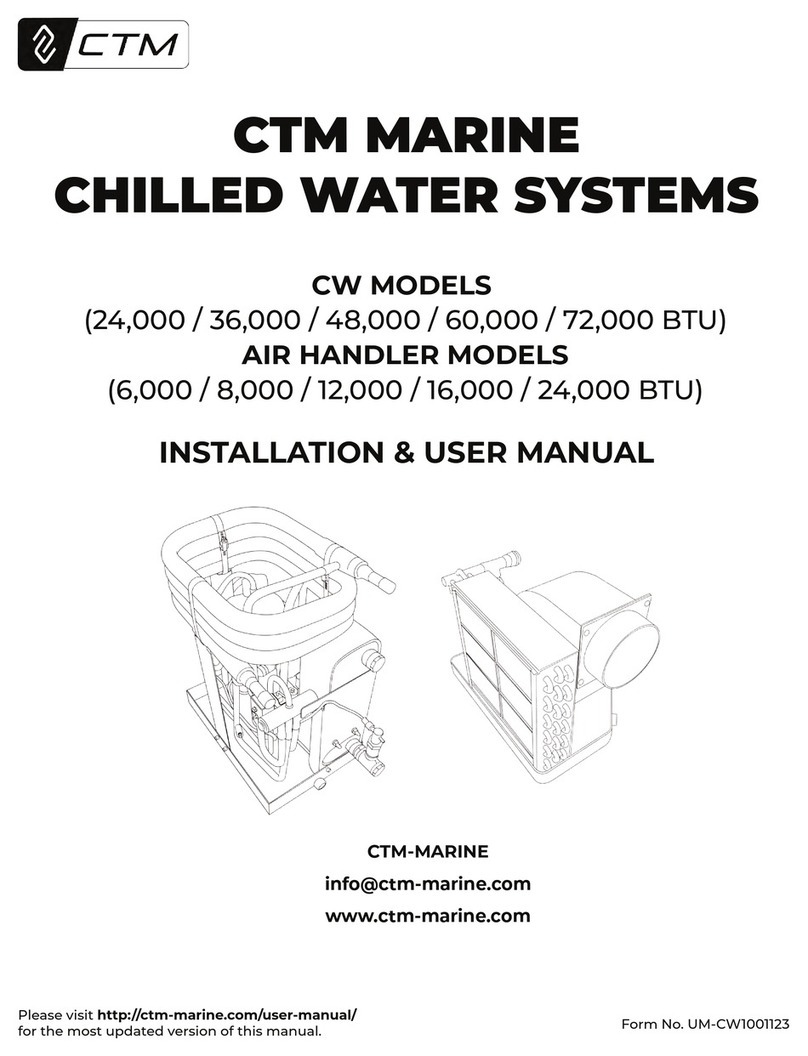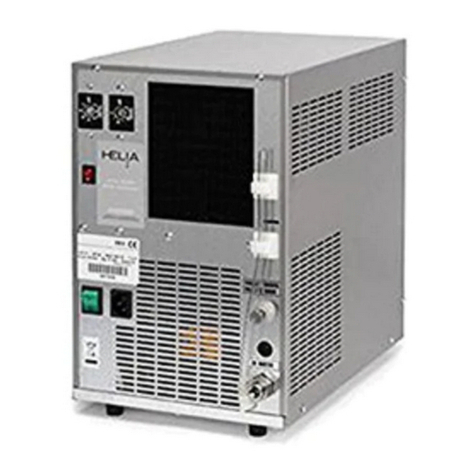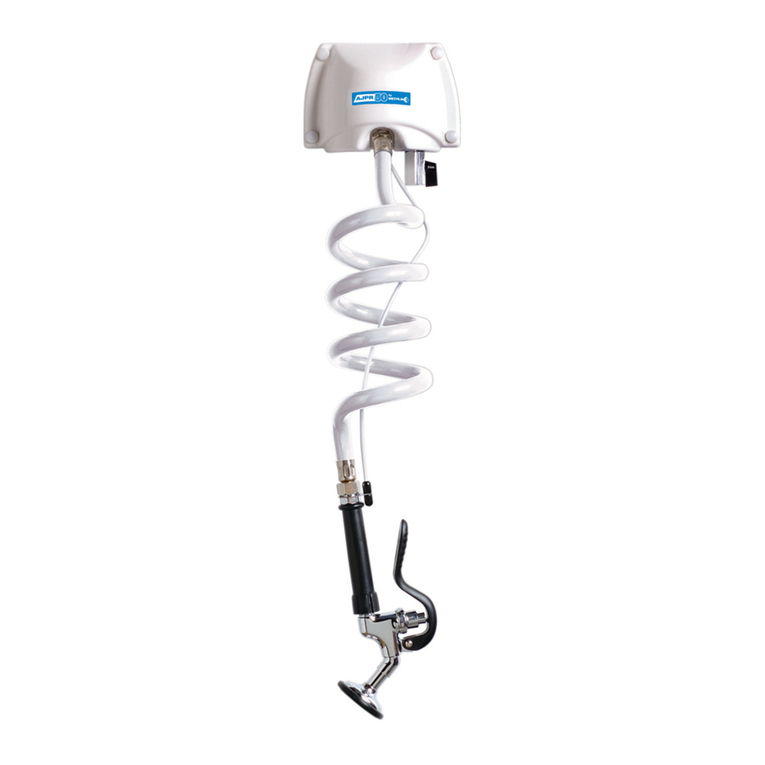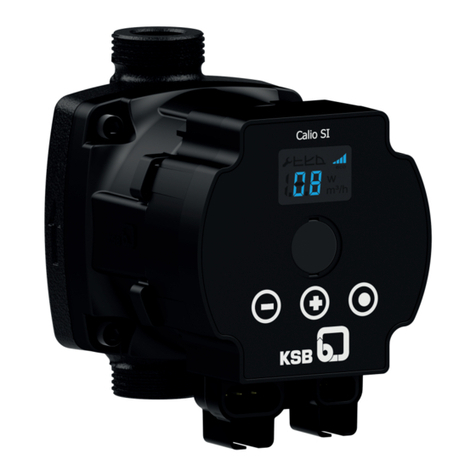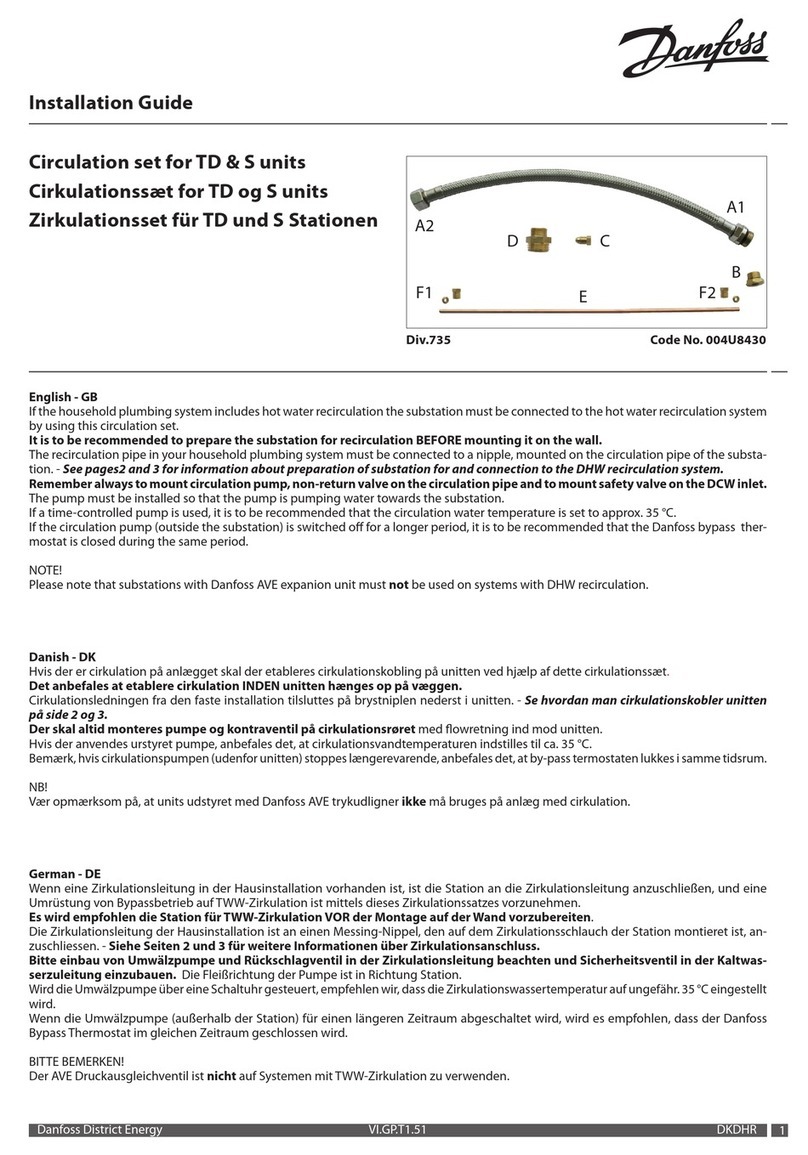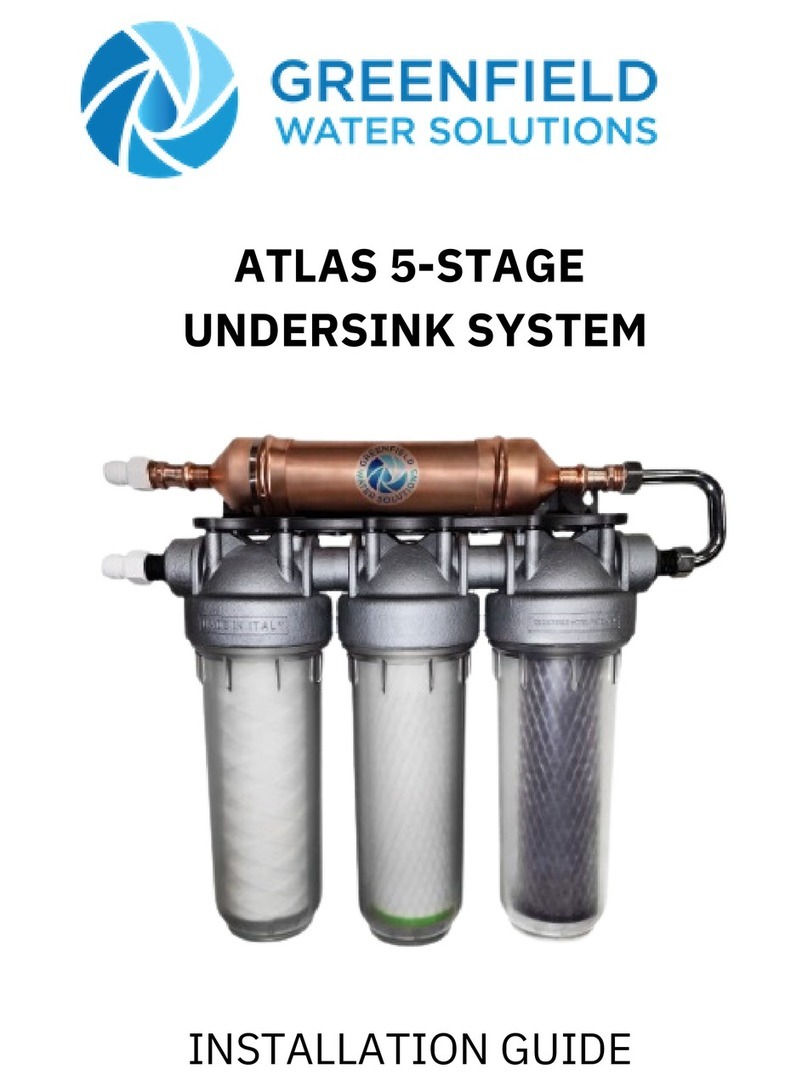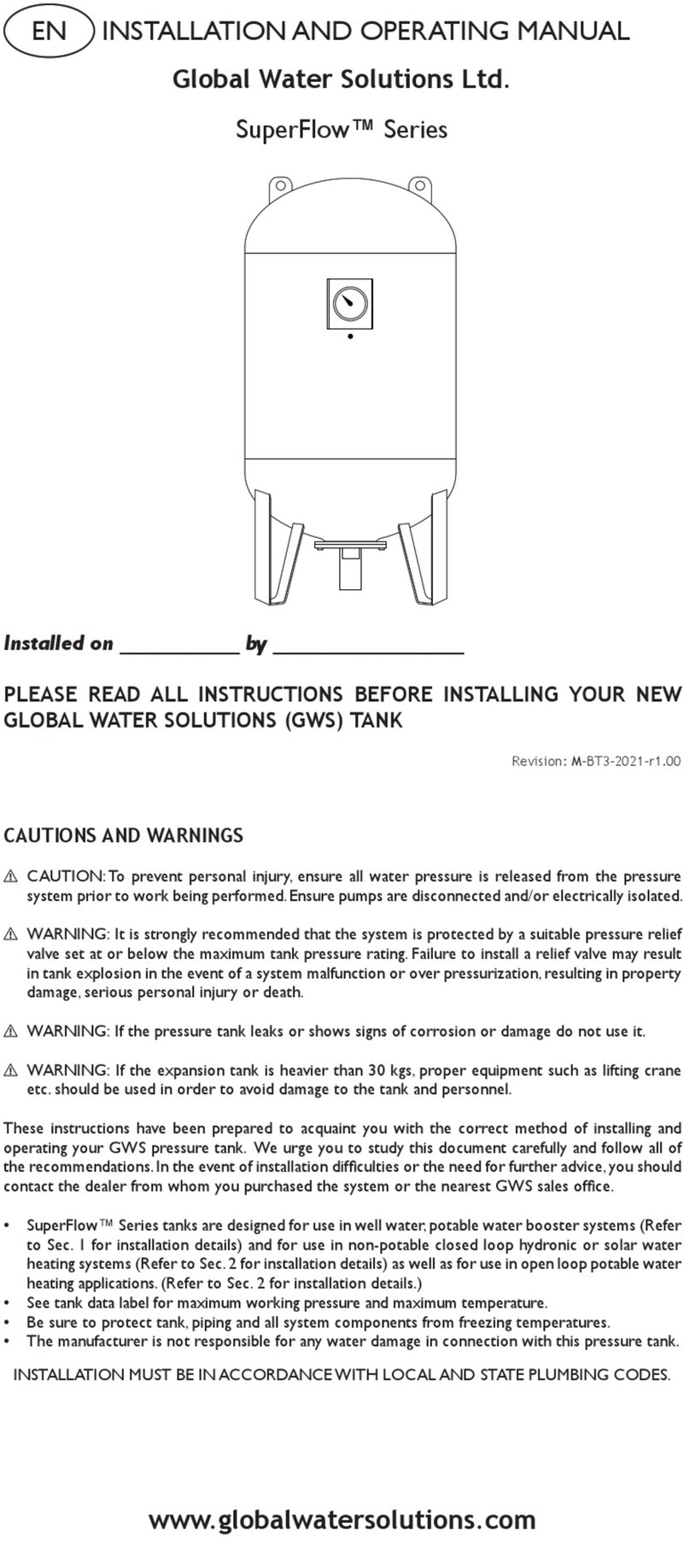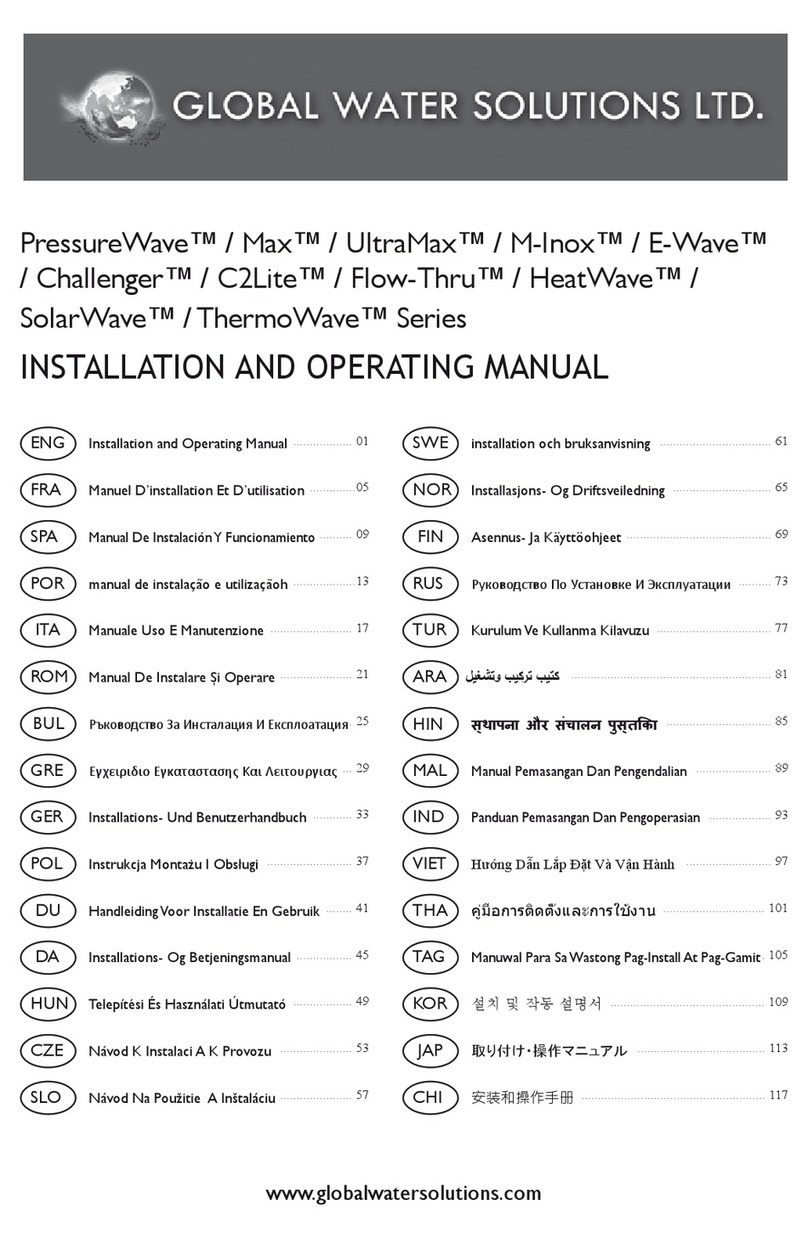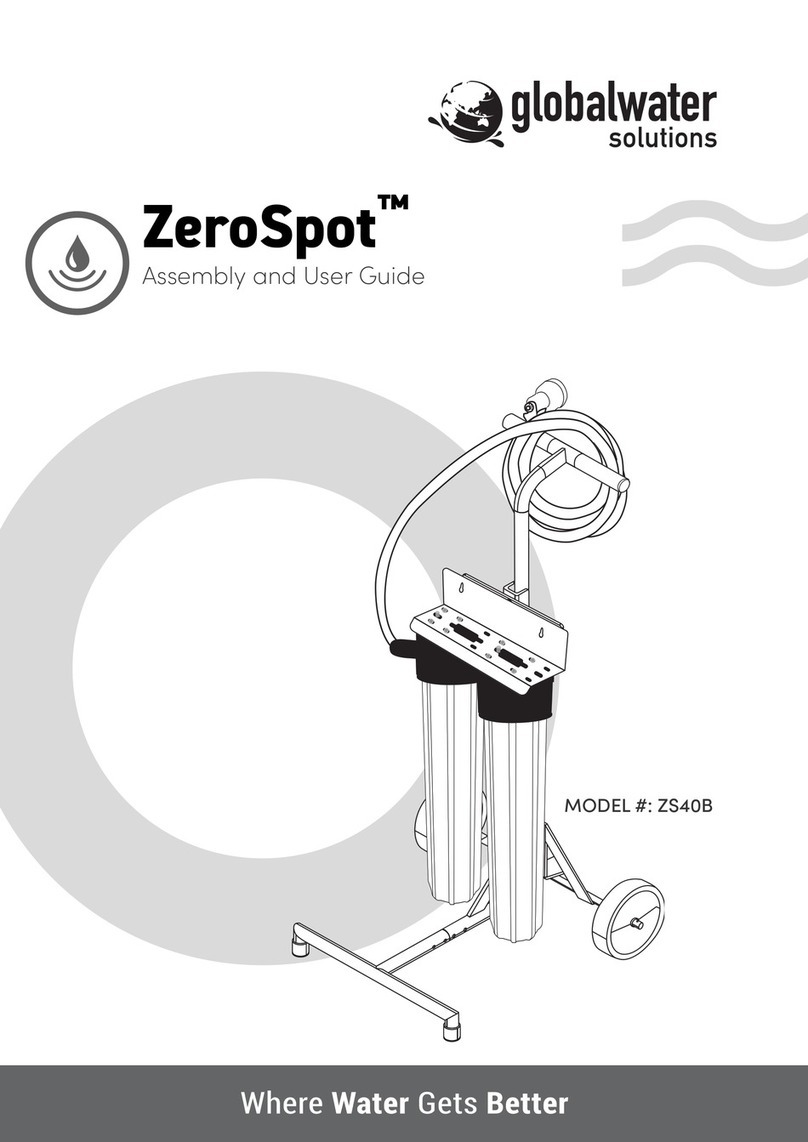
11. After tightening the hanger nut onto the exposed connector, disconnect and remove the rod.
12. If applicable; use silicon tape to thoroughly wrap and seal the hanger connector sealing bolt (g.
4.5). For hanger connector sealing bolts equiped with an o-ring or gasket, silicone tape is not
needed.
13. If applicable;insert the sealing bolt into the open connector,ensure it is properly seated and tighten it.
Do NOT over-tighten (g. 4.6).
14. Fill 2 bar (30 psi) of precharge air or nitrogen and using a soap solution check for leaks all around
the air valve, pressure gauge, top nut and bottom ange.
15. Lift tank upright and attach to pressure system as described earlier in this manual.
16. Open gate valve and allow some water into tank and then pump more air/nitrogen to set tank to
appropriate precharge as described in section 1.3.
17. Now open isolation gate valve to allow full functionality of tank.
Note: For tanks with a ange instead of a hanger on top of the tank, rst mount the membrane to
the top ange.
5. Disposal
Check with local authorities for proper disposal and recycling. Do not dispose of the manual - keep
it for further reference.
6. Warranty
Global Water Solutions Ltd. (GWS) warrants its SuperFlow™ tanks
for a period of 1 years from the date of manufacture for manufacturing defects on the steel shell.
Warranty applies to GWS products only when used for their intended purpose, and does not
apply if a defect is due to improper use of the product, result of accident, misuse, or abuse. If the
product was improperly installed or altered in any way, not specically authorized by the factory,
the warranty is void.The warranty set forth in this paragraph is made expressly in lieu of all other
warranties expressed, or implied, including but not limited to merchantability or tness for a
particular purpose.
For replacement of the membrane, provided the tank is installed by an authorized installer and
pre-charge is set properly as per instruction manual and the pre-charge is checked as per the same
manual at a time interval of every 3 months, warranty is granted for a period of 3 months from date
of manufacture on membrane defects.
In no event shall GWS be liable for cost of processing, lost prots, goodwill or any other
consequential or incidental damage of any kind resulting from the order or use of its products
whether arriving from breach of warranty, nonconformity to ordered specications, delay in delivery,
or any loss sustained by the buyer nor will GWS be liable for labor and expenses necessary to
remove and reinstall replacement product.
To obtain service under this warranty, consumer must deliver alleged defective product, freight
prepaid, to an authorized GWS distributor or OEM partner. GWS will either issue credit or at its
option, repair or replace defective product freight prepaid to the distributor. GWS reserves the right
to make changes in construction, which, in its judgment, constitutes a product improvement.
All warranty is subject to veriable proper installation, adjustment of pre-charge as per our
engineering bulletins and installation of a pressure relief valve as recommended in the installation
manual.
Standard manufacturer’s warranty as dened in the standard GWS warranty terms and conditions.
2.4 Solar Heating System
Connections
SuperFlow™ tanks can be used in the solar
liquid loop of indirect thermal transfer systems
and may be mounted either on the suction
or pressure side of the circulation pump.
If a condenser is employed to cool
evaporated solar liquid it must be in the
location between the solar liquid loop and
the expansion tank. A relief valve should
be employed and maximum operating
parameters must not be exceeded. If the
temperature of the solar system has the
potential to rise above the evaporation point
of the solar liquid, a condenser chamber or
coil is required between the solar collector
and the expansion tank (See Fig. 2.4).
2.5 Thermal Expansion Operating Principles
As water is heated it expands. A thermal expansion tank is used to accommodate for this natural
water expansion, which otherwise may lead to increased system pressure and cause damage to piping,
ttings and other system components. A thermal expansion tank uses a membrane sealed inside
the vessel to create a barrier between water and air chambers.The air chamber acts as a cushion
which compresses as heated water expands.The thermal expansion tank absorbs the expanded water
volume and ensures constant system pressure is maintained. Using a thermal expansion tank also
conserves water and energy. This is accomplished by eliminating the need to rell and reheat water
lost due to venting from the relief valve during heating cycles.
3. Maintenance
SuperFlow™ pressure tanks should be checked by an authorized service professional, every 3 months.
To check precharge, shut off power to the pump, isolate and drain the tank. Check precharge using a
pressure gauge. If needed, top up air to appropriate precharge level using an air pump or compressor.
Open isolation gate valve allowing the pump to ll the tank with water.
Always release all water and air from tank before disassembling the parts exposed to pressure such
as anges, air valve, pressure gauge etc. Make sure that the system is switched off and no electricity
or electrical devices are running.
If the pump short cycles or the heating system relief valve constantly opens, check the air valve
mounted on the tank. If water bleeds from the valve the membrane has burst.Please call an authorized
service provider to replace the membrane with a factory replacement, following the instructions for
membrane replacement in this manual.
Check the quality of the water by draining water from the tank using the drain valve. If the water is
rusted, calcied, or has solid deposits, then either the membrane has failed which can be veried by
above mentioned process or the tank is blocked.
4. Membrane Replacement Instructions
1. Turn off the water and/or disconnect the power to the pump.
2. Release the air and drain all water from tank.
3. Unbolt and remove the ange (water connection) from the tank.
4. Remove the nut and the washer on the top of the tank which is attached to the membrane hanger
that is anchoring the top of the membrane (g. 4.1, g. 4.4).
5. Pull and remove the membrane through the bottom opening to which the ange was attached.
6. Remove the top connection membrane hanger from the damaged membrane, this can be reused
and should be cleaned.
7. Take the membrane hanger and attach it to a rod, a cable or alike, as seen in g. 4.2.
8. Pull the rod and hanger up through the membrane until the top of the hanger is protruding from
the top of the membrane (g. 4.3).
9. Feed the rod from the bottom of the tank up through the opening at the top of the tank until the
hanger is protruding from the top of the tank and the threads are visible.
10. Slip the washer and then the hanger nut over the end of the rod/cable and tighten onto the
exposed connector (g. 4.4).
Hot
Cold
Pump
Pump
Solar Collector
Condenser
Solar
Tank
Storage
Tank
Heat
Exchanger
Fig. 2.4
Fig. 4.2
rod
cable
Fig. 4.3
membrane
rod or cable
Fig. 4.5
hanger connector
sealing bolt
silicone tape
Fig. 4.6
hanger connector
sealing bolt washer
hanger nut
Fig. 4.4
rod or cable
hanger nut washer
tank
membrane hanger
Fig. 4.1
EC declaration of conformity
We, Global Water Soluons Ltd., declare under
our sole responsibility that the pressure vessels
types MCPA / MCMA / MCUA, to which this
declaraon relates, are in conformity with these
Council direcves on the approximaon of the
laws of the EC member states:
The products are diaphragm tanks. All products are examined under these condions:
Type Maximum
Pressure [bar]
Volume
[litres]
Category Used Design
Standard
MCPA-10 10 50-3000 II, III, IV EN13831
MCMA-16 16 50-3000 II, III, IV EN13831
MCUA-25 25 50-3000 II, III, IV EN13831
Fluid group: 2 Cercate Number: CE-0062-PED-B3.1-GWS 001-17-CHN-rev-A
Noed body: CE 0062 - Bureau Veritas
Newme - 52 Boulevard du Parc - Ile de la Jae, 92200 Neuilly sur Seine, France
Manufacturer: Global Water Soluons China Manufacturing Co.,Ltd.
No. 69 Shaohai Road, Hongdao Economic Zone, Qingdao, Shandong Province, China
Konformitätserklärung
Wir, Global Water Soluons Ltd. erklären in
alleiniger Verantwortung, dass die Druckbehälter
Typ MCPA / MCMA / MCUA, auf die sich diese
Erklärung bezieht, mit den folgenden Richtlinien
des Rates zur Angleichung der Rechtsvorschrien
der EU-Mitgliedsstaaten übereinsmmen:
Dichiarazione di Conformità
Global Water Soluons Ltd. dichiara soo la sua
esclusiva responsabilità che i vasi di espansione
po MCPA / MCMA / MCUA, ai quali si riferisce
questa dichiarazione, sono conformi alle
seguen direve del Consiglio riguardan il
riavvicinamento delle legislazioni degli Sta
membri CE:
Declaração de Conformidade
A Global Water Soluons Ltd. declaramos sob
nossa única responsabilidade que os tanques de
pressão type MCPA / MCMA / MCUA, aos quais diz
respeito esta declaração, estão em conformidade
com as seguintes Direcvas do Conselho sobre
a aproximação das legislações dos Estados
Membros da CE:
Försäkran om överensstämmelse
Vi, Global Water Soluons Ltd. försäkrar
härmed a tryckkärl av typen MCPA / MCMA
/ MCUA, som omfaas av denna försäkran, är
i överensstämmelse med rådets direkv om
inbördes närmande ll EU-medlemsstaternas
lagsning, avseende:
Overensstemmelseserklæring
Vi, Global Water Soluons Ltd. erklærer under
ansvar, at trykbeholdere type MCPA / MCMA
/ MCUA, som denne erklæring omhandler,
er i overensstemmelse med disse af Rådets
direkver om indbyrdes lnærmelse l EF-
medlemsstaternes lovgivning:
Déclaration de Conformité
Nous, Global Water Soluons Ltd., déclarons
sous notre seule responsabilité, que les vases
d’expansion type MCPA / MCMA / MCUA,
auxquels se réfère cee déclaraon, sont
conformes aux Direcves du Conseil concernant
le rapprochement des législaons des Etats
membres CE relaves aux normes énoncées ci-
dessous :
Declaración de Conformidad
Nosotros, Global Water Soluons Ltd. declaramos
bajo nuestra única responsabilidad que los
tanques a presión type MCPA / MCMA / MCUA,
a los cuales se reere esta declaración, están
conformes con las Direcvas del Consejo en
la aproximación de las leyes de las Estados
Miembros del EM:
Декларация Соответствия
Мы, компания Global Water Soluons Ltd.,
полностью несем ответственность за то, что
сосудов под давлением типов MCPA / MCMA
/ MCUA, к которым относится настоящая
декларация, соответствуют следующим
Директивам Совета Евросоюза об унификации
законодательных предписаний стран-членов
ЕС:
Vastaavuusvakuutus
Me, Global Water Soluons Ltd. vakuutamme,
eä valmistamamme paineasat type MCPA /
MCMA / MCUA, joita tämä vakuutus koskee,
ovat EY:n jäsenvaloiden lainsäädännön
yhdenmukaistamiseen tähtäävien Euroopan
neuvoston direkivien vaamusten mukaisia
seuraavas:
DECLARATION OF CONFORMITY
Pressure Vessels Types MCPA / MCMA / MCUA
Alexander Staudt
Technical Manager
Luxembourg, November16th, 2017Global Water Solutions Ltd.
5th oor, 37 Esplanade
St. Helier – JE1 2TR
Jersey
The Channel Islands
PED 2014/68/EU




